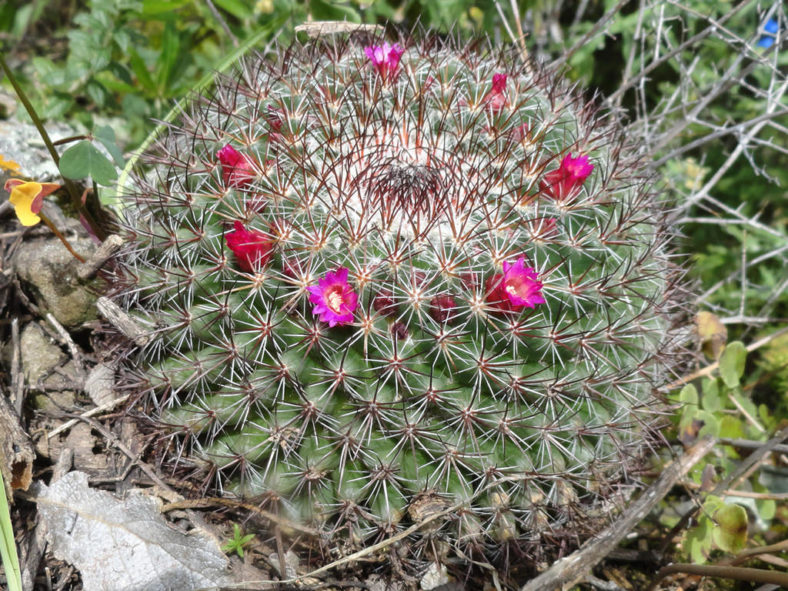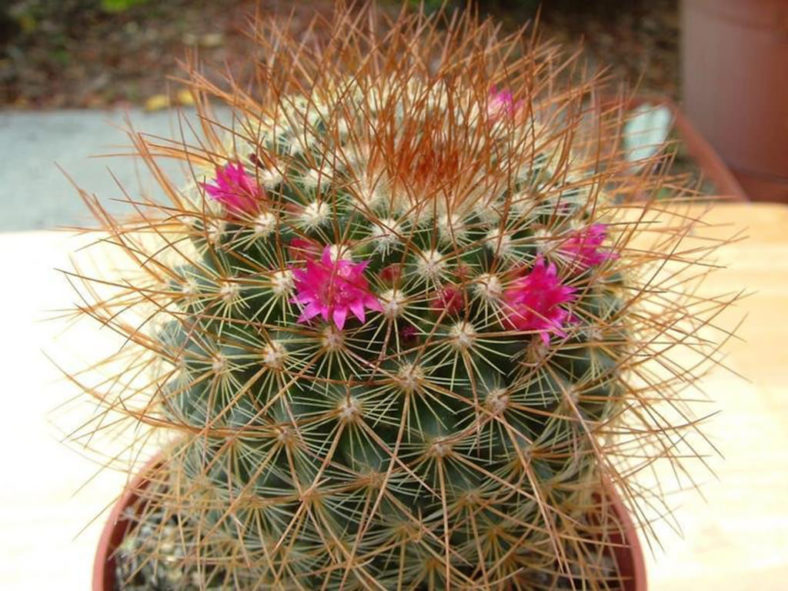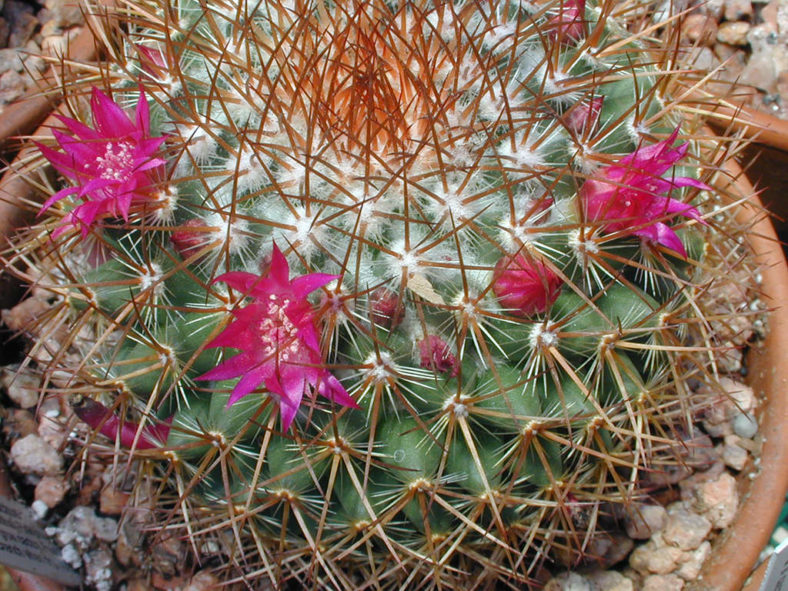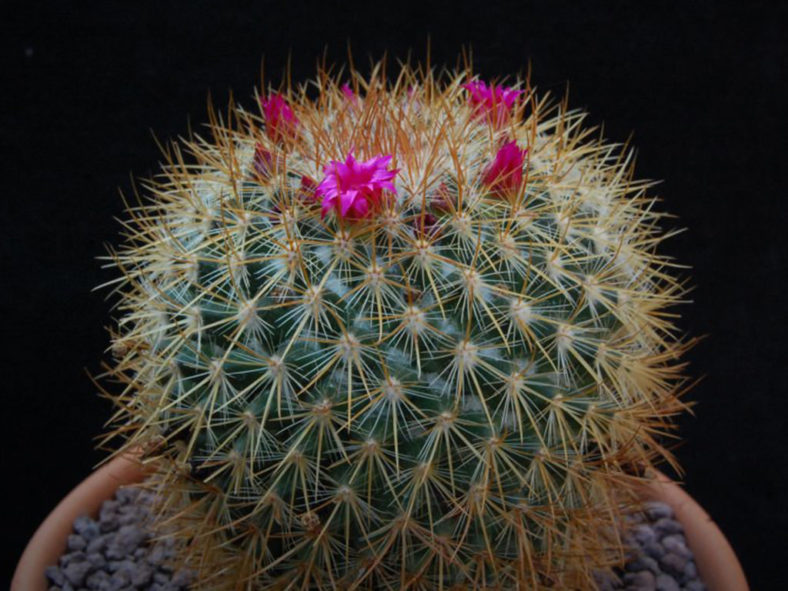Scientific Name
Mammillaria rhodantha Link & Otto
Common Name(s)
Rainbow Pincushion
Synonym(s)
Cactus atratus, Cactus rhodanthus, Mammillaria atrata, Neomammillaria rhodantha
Scientific Classification
Family: Cactaceae
Subfamily: Cactoideae
Tribe: Cacteae
Subtribe: Cactinae
Genus: Mammillaria
Etymology
The specific epithet "rhodantha (rho-DAN-tha)" means "having red flowers" and refers to the color of the flowers.
Origin
Mammillaria rhodantha is native to Mexico.
Description
Mammillaria rhodantha is a small cactus with dark green stems covered with tubercles and spines that grow from the areoles at the tip of the conical to cylindrical tubercles. It can grow solitary or in small clumps. The stems are spherical to short cylindrical or club-shaped with white wool in the axils, measuring up to 16 inches (30 cm) in height and up to 5 inches (12.5 cm) in diameter. The spines are variable in number, size, and color. Each areole bears 4 to 6 central and 16 to 24 radial spines. The central spines are reddish-brown or pale to golden yellow, slightly curved, measuring up to 0.6 inches (1.5 cm) long, while the radial spines are white or yellowish, measuring up to 0.4 inches (1 cm) long.
The flowers are deep-pink to purple and appear from spring to fall. They can reach up to 0.9 inches (2.2 cm) in length and 0.7 inches (1.8 cm) in diameter. The fruits are purplish-pink, cylindrical to club-shaped, and can grow up to 1 inch (2.5 cm) long.

How to Grow and Care for Mammillaria rhodantha
Light: Plant this cactus in an area of your garden that receives 4 hours of direct sunlight daily. If growing M. rhodantha indoors, place it near the brightest window in your home or office to ensure your cactus gets enough light. Place the pot on the balcony or in the garden for extra light from spring to fall if possible.
Soil: M. rhodantha requires a soil mix that provides root aeration and good drainage, whether grown outdoors or indoors. Use commercial cactus potting mixes or create your own potting mix.
Hardiness: This cactus is heat tolerant but is not a cold-hardy plant. M. rhodantha can withstand temperatures as low as 25 to 50 °F (-3.9 to 10 °C), USDA hardiness zones 9b to 11b.
Watering: From spring to fall, water deeply and wait for the soil to dry out before watering again. Never let the pot sit in water. Suspend watering in the winter.
Fertilizing: M. rhodantha can benefit from fertilizing during the growing season. Apply a water-soluble fertilizer for cacti and other succulents. Suspend feeding during the winter when the plant goes dormant.
Repotting: Repot every two or three years into a slightly larger pot. The best time to repot your M. rhodantha is late winter or early spring, but the repotting process can be done almost any time of the year.
Propagation: There are two easy ways to propagate M. rhodantha: by seeds or by dividing offsets. The best time to remove offsets is in spring and summer. Sow the seeds in late spring or summer.
Learn more at How to Grow and Care for Mammillaria.
Toxicity of Mammillaria rhodantha
M. rhodantha is considered non-toxic to both humans and pets.
Links
- Back to genus Mammillaria
- Succupedia: Browse succulents by Scientific Name, Common Name, Genus, Family, USDA Hardiness Zone, Origin, or cacti by Genus
Photo Gallery
Click on a photo to see a larger version.


